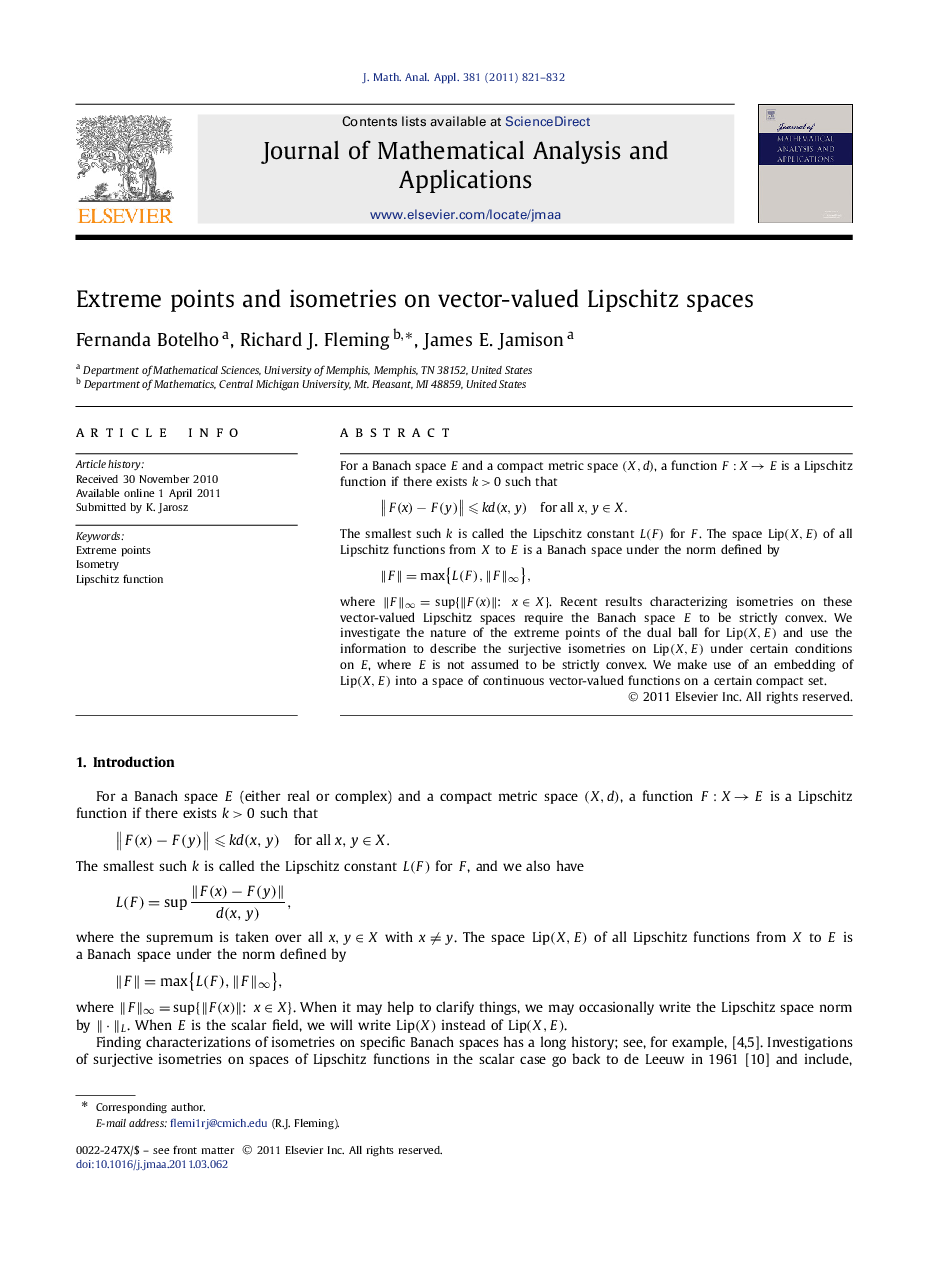| Article ID | Journal | Published Year | Pages | File Type |
|---|---|---|---|---|
| 4618108 | Journal of Mathematical Analysis and Applications | 2011 | 12 Pages |
For a Banach space E and a compact metric space (X,d)(X,d), a function F:X→EF:X→E is a Lipschitz function if there exists k>0k>0 such that‖F(x)−F(y)‖⩽kd(x,y)for all x,y∈X. The smallest such k is called the Lipschitz constant L(F)L(F) for F . The space Lip(X,E)Lip(X,E) of all Lipschitz functions from X to E is a Banach space under the norm defined by‖F‖=max{L(F),‖F‖∞},‖F‖=max{L(F),‖F‖∞}, where ‖F‖∞=sup{‖F(x)‖:x∈X}‖F‖∞=sup{‖F(x)‖:x∈X}. Recent results characterizing isometries on these vector-valued Lipschitz spaces require the Banach space E to be strictly convex. We investigate the nature of the extreme points of the dual ball for Lip(X,E)Lip(X,E) and use the information to describe the surjective isometries on Lip(X,E)Lip(X,E) under certain conditions on E, where E is not assumed to be strictly convex. We make use of an embedding of Lip(X,E)Lip(X,E) into a space of continuous vector-valued functions on a certain compact set.
